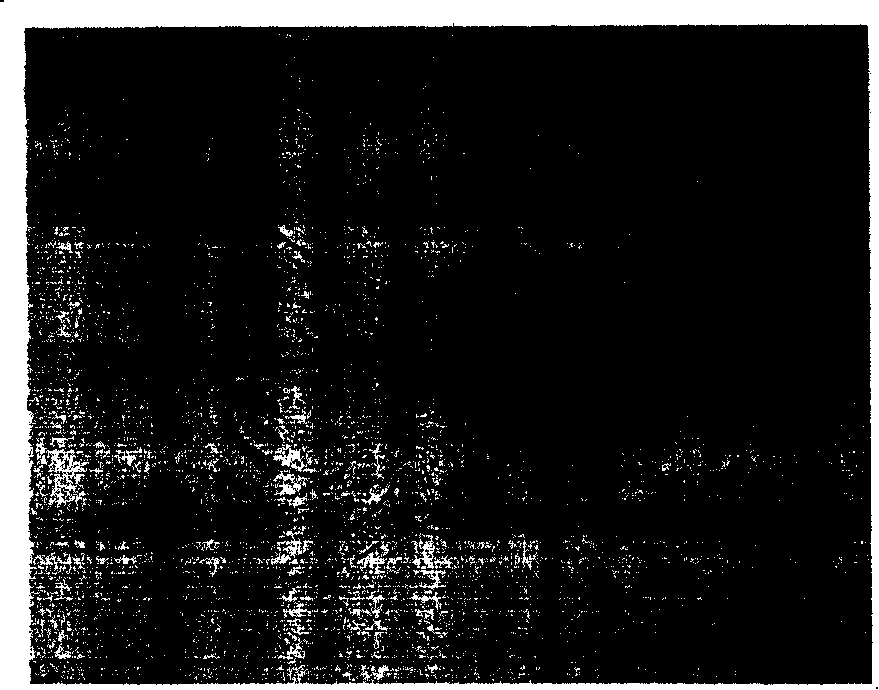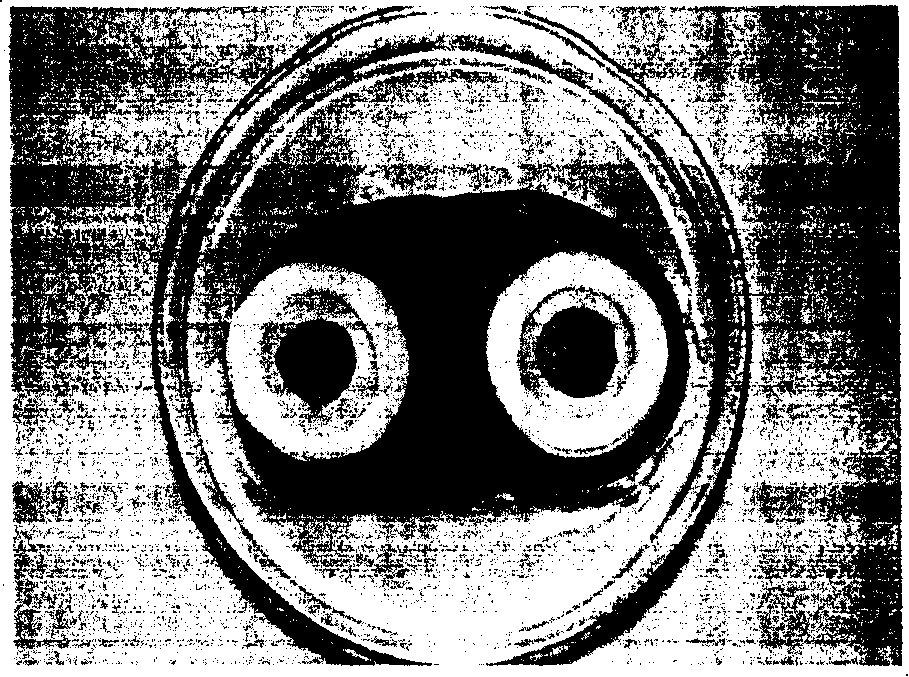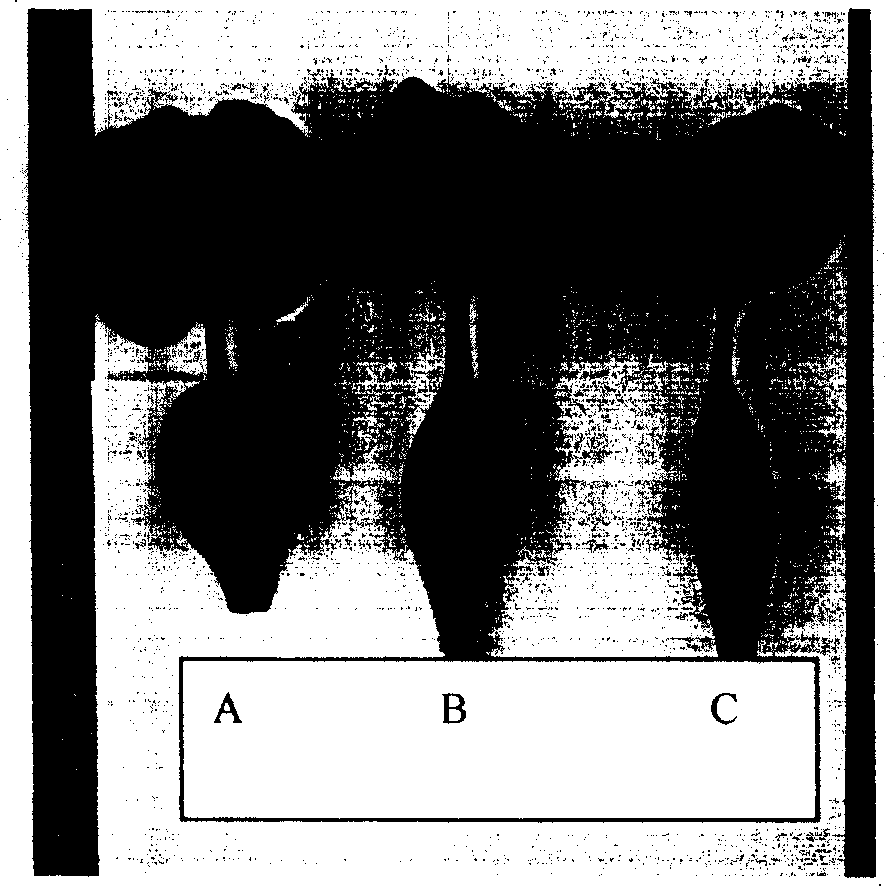Method for prevention and treating common water hyacinthes
A technology for water hyacinth and hydrangea, which is applied in the fields of botanical equipment and methods, chemicals for biological control, animal repellents, etc., can solve problems such as unmanned investigation and research on natural enemies, and achieve good control effects.
- Summary
- Abstract
- Description
- Claims
- Application Information
AI Technical Summary
Problems solved by technology
Method used
Image
Examples
Embodiment 1
[0018] The laboratory breeding of embodiment 1 hydrangea spider mite
[0019] Pour hot agar water medium (containing 20% agar) into a petri dish, when the medium is about to solidify, stick the leaves of water hyacinth on the surface of the medium, after the leaves are fixed, stick a circle of wet cotton strips around the leaves , hydrangea spider mites can be stocked on the leaves in the center of the cotton circle ( figure 2 ).
[0020] In order to obtain a large amount of Tetranychus hydrangea and make biological herbicide (live body), it is necessary to carry out artificial breeding of Tetranychus hydrangea. Cultivate water hyacinths in a net room (80 mesh gauze, temperature 23-32°C, relative humidity 40-70%) with fertilizer and water, insert hydrangea spider mites into water hyacinth groups, and allow them to reproduce naturally. Usually, one generation of Tetranychus hydrangea takes about 15 days, and more than 20 generations can occur in a year in South China. Hyd...
Embodiment 2
[0021] Embodiment 2 The time and mode of inserting hydrangea spider mite
[0022] 1. Time to access Hydrangea Tetranychus
[0023] The optimum growth temperature for Tetranychus hydrangea is 25-28°C. Most Tetranychus prefer dry conditions, and the relative humidity is generally 40-70%. Rainwater erosion is an important reason for the decrease in the number of mites. Therefore, in Guangdong areas such as Guangzhou, the time to inoculate Tetranychus hydrangea should be arranged after June of the current year and before March of the following year (preferably from September to November of the current year, when the temperature and relative humidity are suitable for the growth of Tetranychus hydrangea). At this time, the weather is relatively dry, and the growth of water hyacinth is slow, while the population of Tetranychus hydrangea grows extremely fast, which can achieve better control effect.
[0024] 2. Production of water hyacinth biological herbicide
[0025] Adult mites a...
Embodiment 3
[0026] Example 3 Evaluation of Hydrangea Tetranychus Control Effects on Water Hyacinth in Laboratory and Net Room
[0027] In the laboratory, individual water hyacinths were cultured in plastic pots filled with Hoagland nutrient solution, and then the plastic pots were placed in insect cages with 80-mesh gauze. Inoculate 10 or 100 spider mites on each water hyacinth. After 18 days, the water hyacinth leaves of the 100 mite / plant treatment group were obviously damaged; after 24 days, the seriously damaged water hyacinth leaves of the 100 mite / plant treatment group had withered, and the affected plants were obviously shorter than the control, and the leaf area was also smaller than the control; The symptoms of water hyacinth damage in the 10 mite / strain treatment group were lighter than those in the 100 mite / strain treatment group ( image 3 ).
[0028] In the net room, the area of the water hyacinth group is 3.24m 2 ( Figure 4 ), near a square shape, several pieces of wa...
PUM
 Login to View More
Login to View More Abstract
Description
Claims
Application Information
 Login to View More
Login to View More - R&D
- Intellectual Property
- Life Sciences
- Materials
- Tech Scout
- Unparalleled Data Quality
- Higher Quality Content
- 60% Fewer Hallucinations
Browse by: Latest US Patents, China's latest patents, Technical Efficacy Thesaurus, Application Domain, Technology Topic, Popular Technical Reports.
© 2025 PatSnap. All rights reserved.Legal|Privacy policy|Modern Slavery Act Transparency Statement|Sitemap|About US| Contact US: help@patsnap.com



